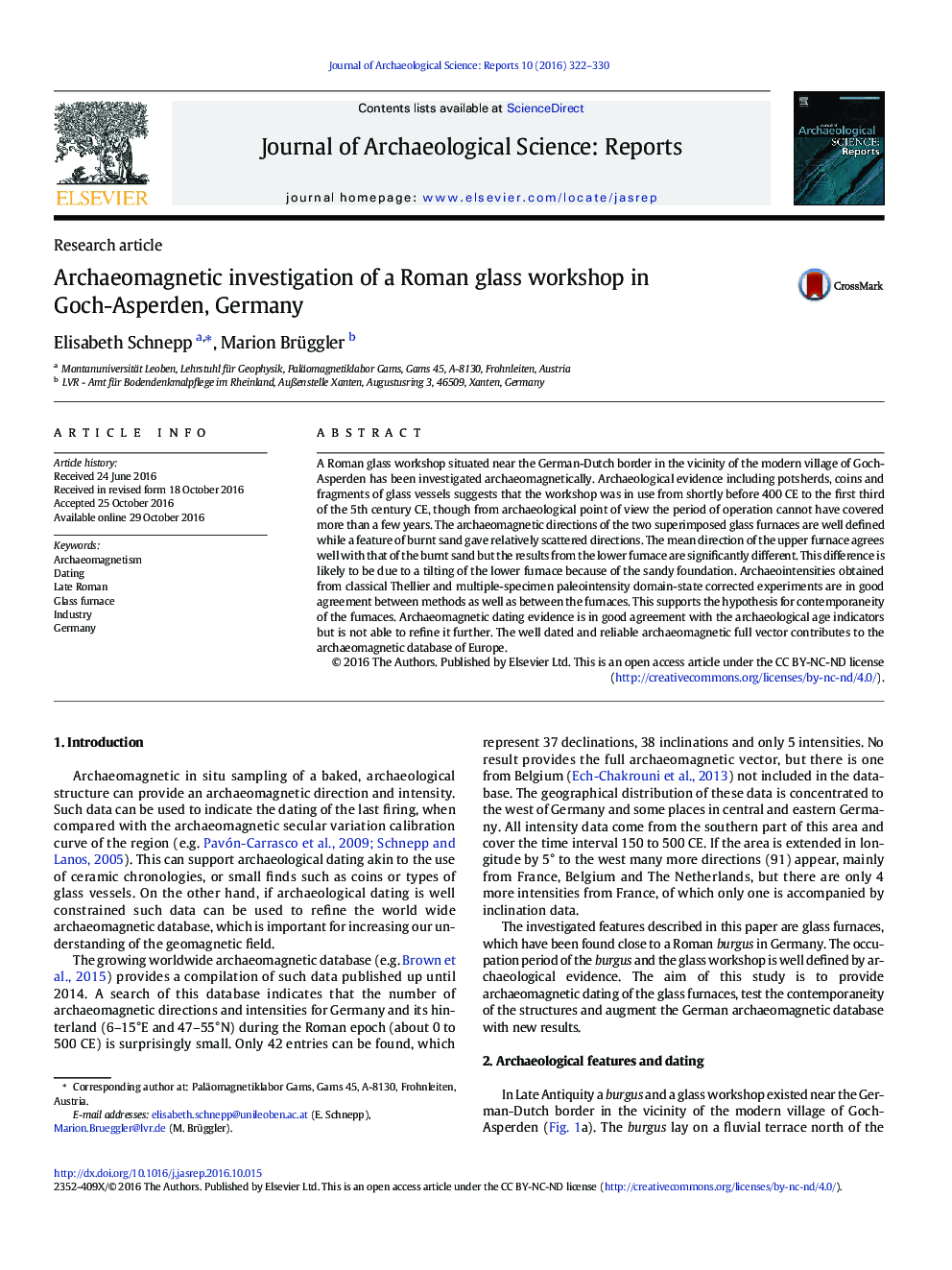| Article ID | Journal | Published Year | Pages | File Type |
|---|---|---|---|---|
| 5112246 | Journal of Archaeological Science: Reports | 2016 | 9 Pages |
Abstract
A Roman glass workshop situated near the German-Dutch border in the vicinity of the modern village of Goch-Asperden has been investigated archaeomagnetically. Archaeological evidence including potsherds, coins and fragments of glass vessels suggests that the workshop was in use from shortly before 400Â CE to the first third of the 5th century CE, though from archaeological point of view the period of operation cannot have covered more than a few years. The archaeomagnetic directions of the two superimposed glass furnaces are well defined while a feature of burnt sand gave relatively scattered directions. The mean direction of the upper furnace agrees well with that of the burnt sand but the results from the lower furnace are significantly different. This difference is likely to be due to a tilting of the lower furnace because of the sandy foundation. Archaeointensities obtained from classical Thellier and multiple-specimen paleointensity domain-state corrected experiments are in good agreement between methods as well as between the furnaces. This supports the hypothesis for contemporaneity of the furnaces. Archaeomagnetic dating evidence is in good agreement with the archaeological age indicators but is not able to refine it further. The well dated and reliable archaeomagnetic full vector contributes to the archaeomagnetic database of Europe.
Related Topics
Social Sciences and Humanities
Arts and Humanities
History
Authors
Elisabeth Schnepp, Marion Brüggler,
